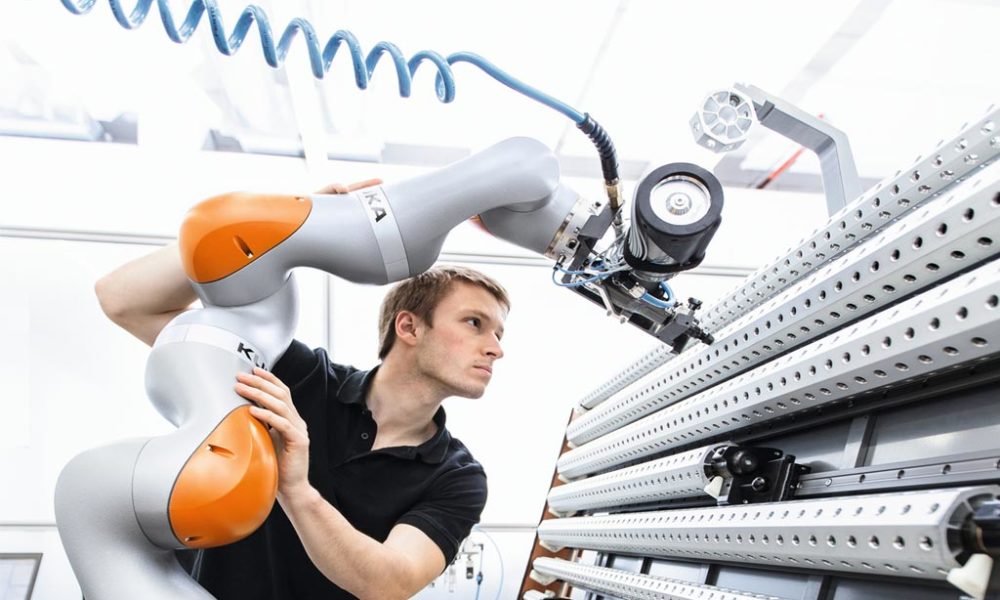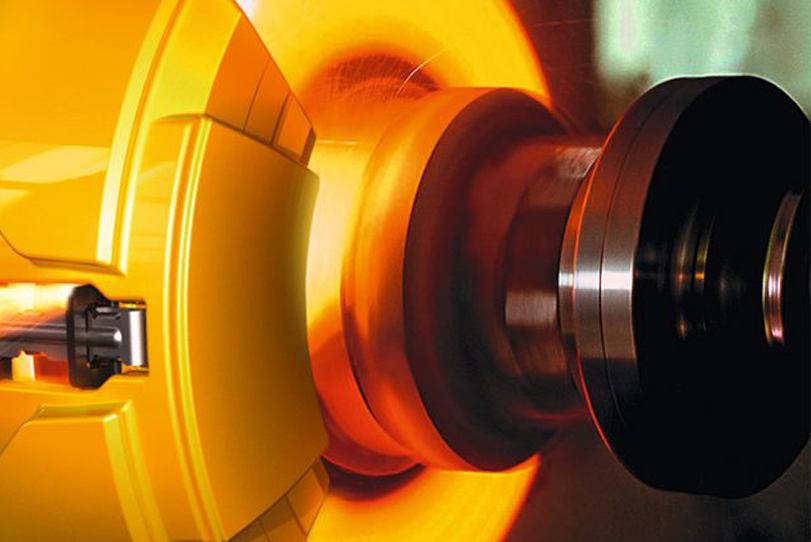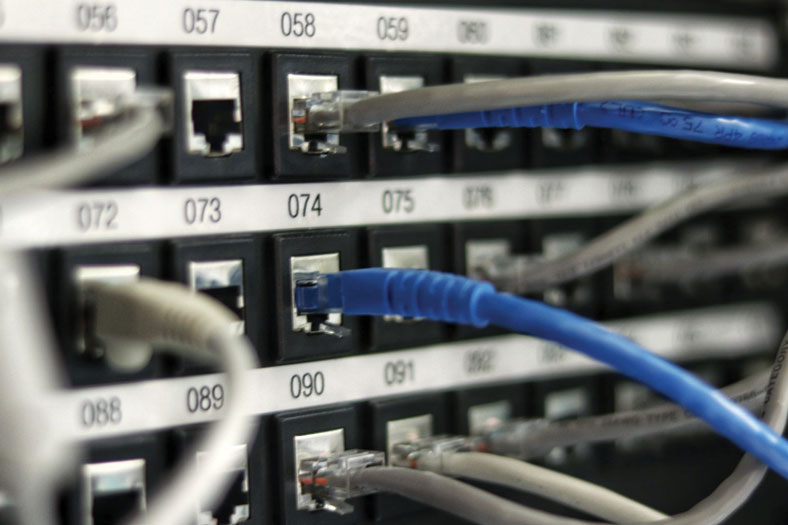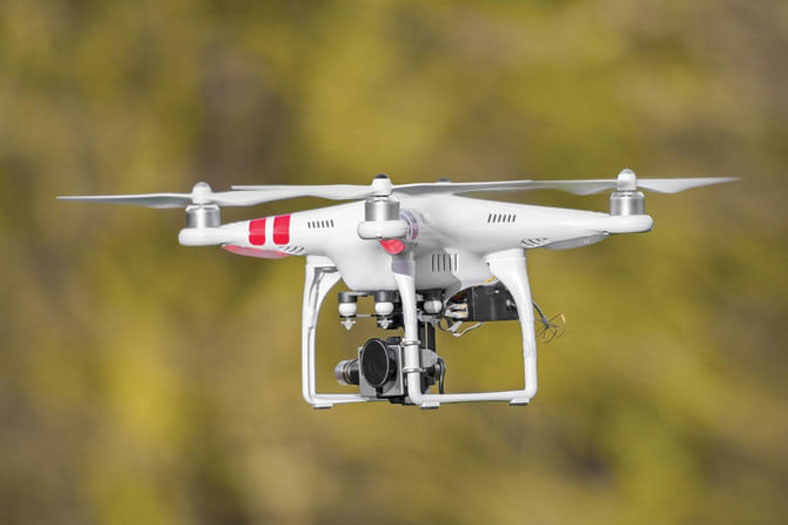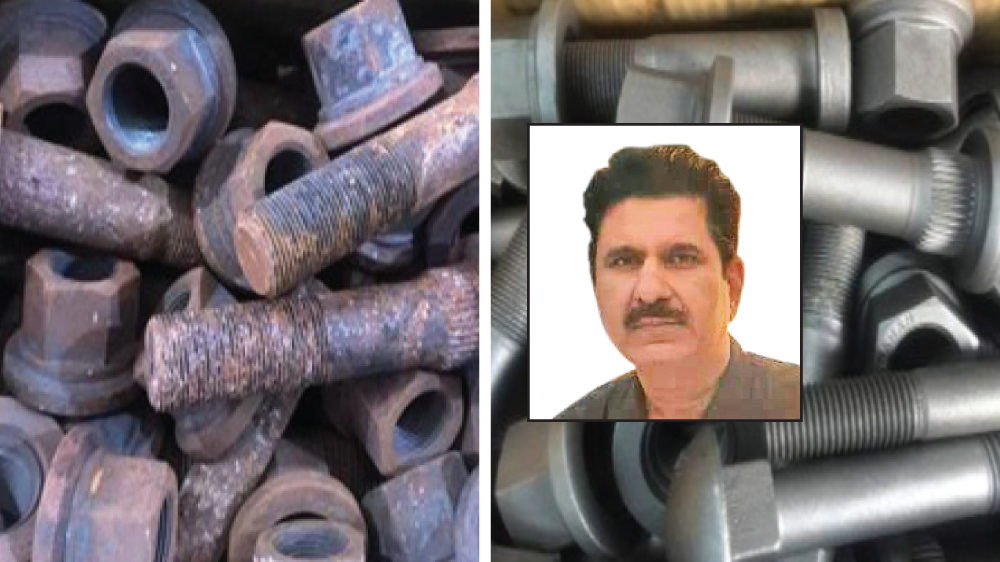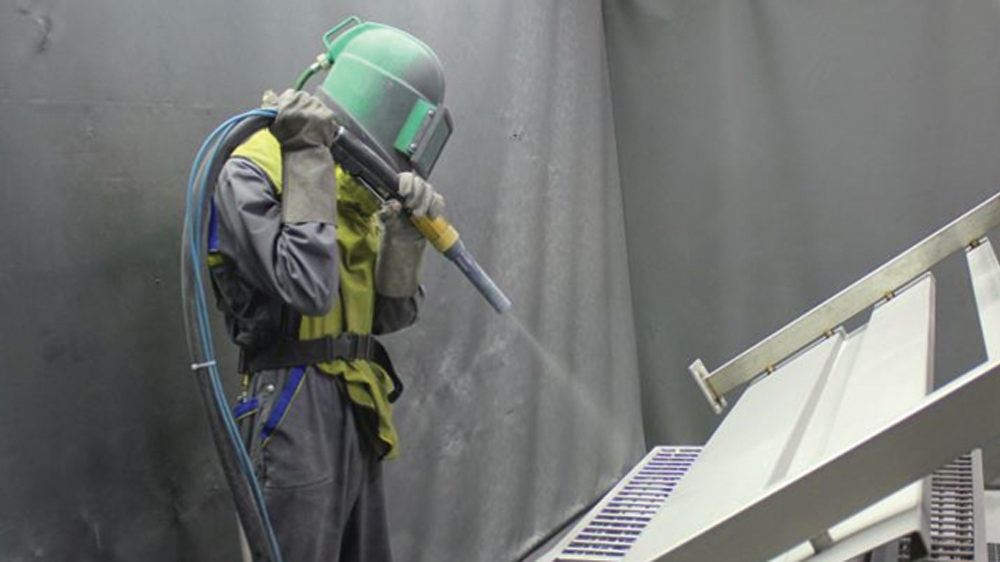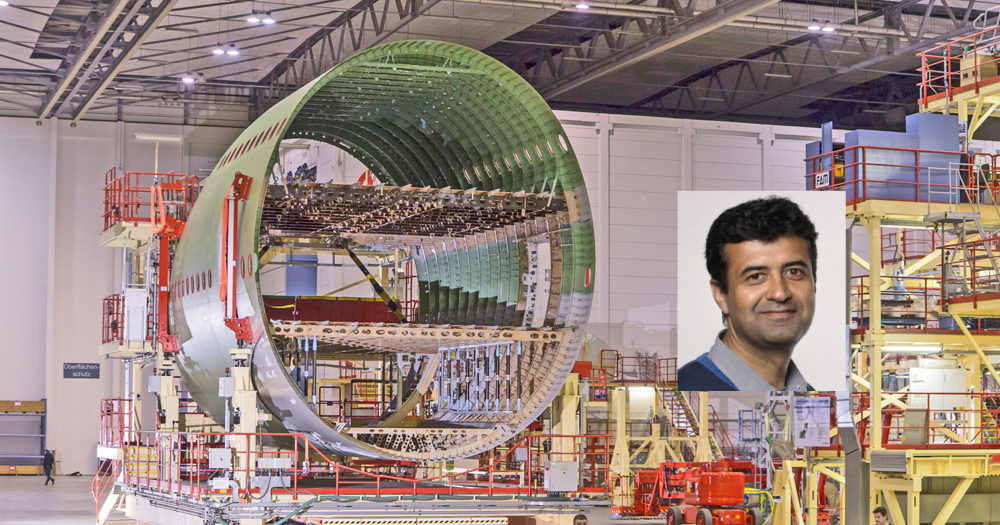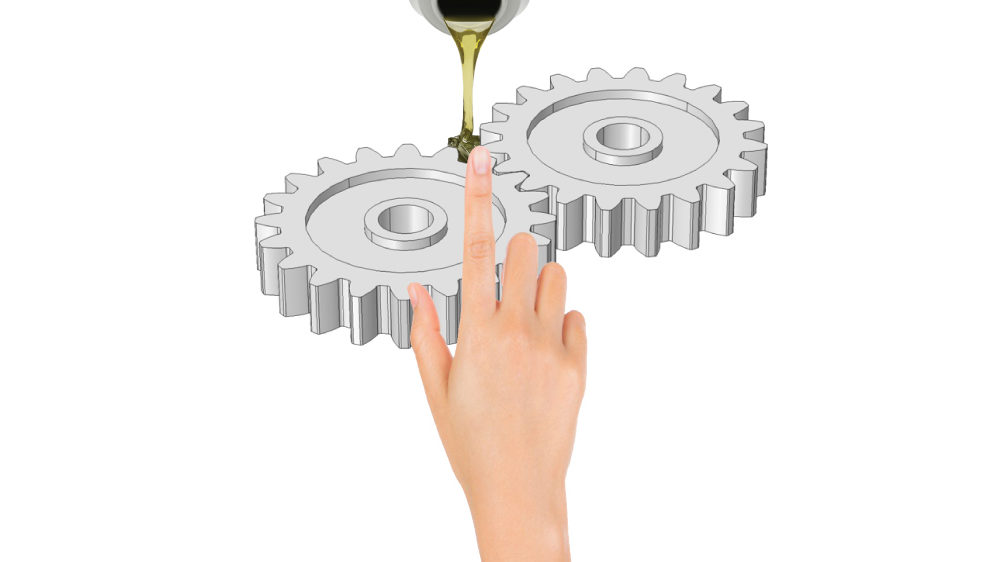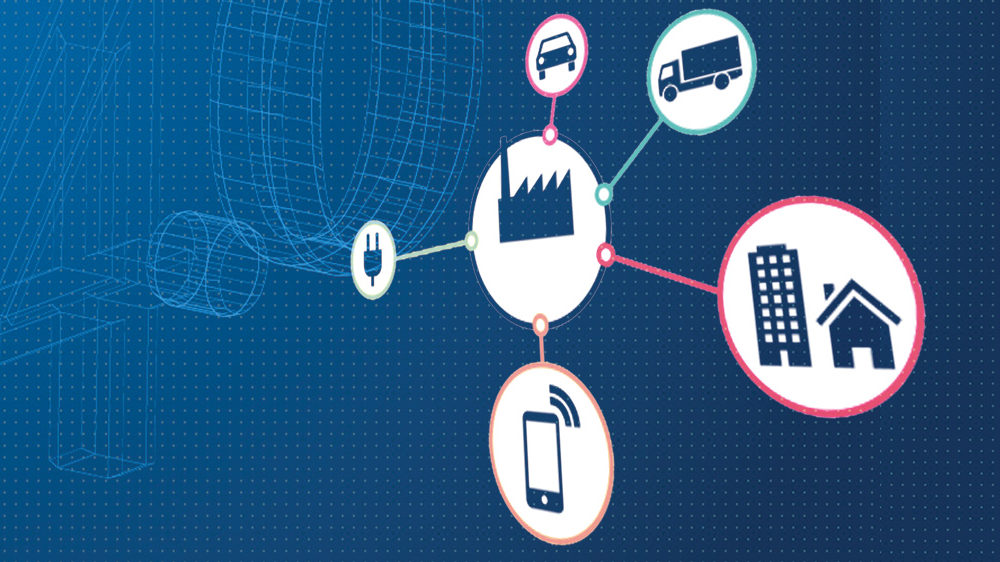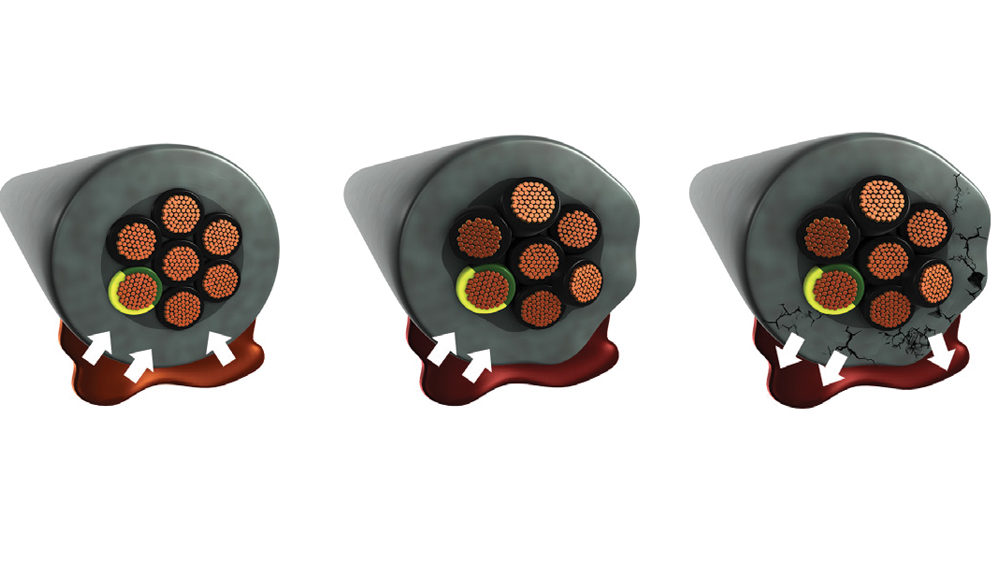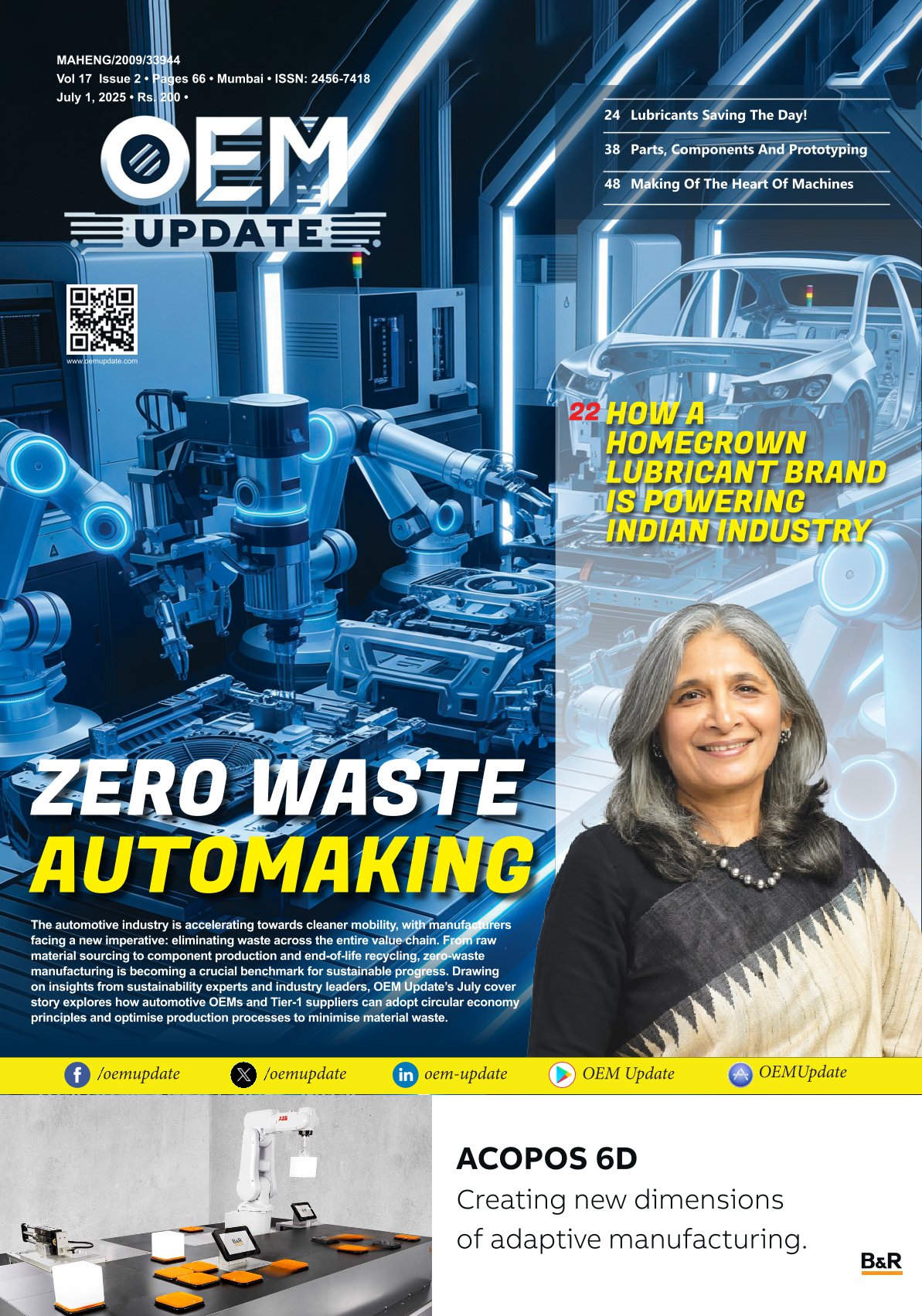Robotic colleagues in factories of the future
By OEM Update Editorial September 11, 2017 3:26 pm IST
How industrial robots are enabling the “update” to Industry 4.0
Ever since the earliest days of flint axes, man has attempted to make his daily work easier using tools. For a long time, however, human muscle and brain power were required in order to be able to use such tools in a purposeful manner. It was not until the start of the industrial revolution at the end of the 18th century that machines began to be driven using water or steam power, rather than human or animal muscle power, followed in the first half of the 20th century by electric power. “Control” of the machines was initially carried out using entirely mechanical means, such as a line shaft. In the 1970s, programmable controllers were gradually introduced, giving production technology a new degree of flexibility. For production to become truly flexible, however, the machines themselves also had to become more flexible. It is thus no coincidence that industrial robots found their way into production systems at around the same time. These can be used to move tools (e.g. weld guns or grippers) flexibly in all six degrees of freedom. What has been missing until ow, however, in this “Industry 3.0”, is the ability for human-machine and machine-machine communication and cooperation. This is precisely what the “update” from “Industry 3.0” to “Industry 4.0” promises.
What will this “update” actually entail in practice? Let us assume that a medium-sized manufacturing firm receives an urgent production order. One of the production machines required for this order determines that its capacity will be fully taken up by its current task until the end of the week. It will thus not be able to start on the new order until Saturday at the earliest. Employees who could work on the Saturday report in using their smartphones. In addition to the human employees and the machines, however, the required tools and materials must also be available. A robot that had already ordered a service technician and a new gear unit for the originally production-free time on Saturday now rearranges both for the next break in production. The workpieces to be produced “know” their geometry, the material they are made of and the work steps to be performed on them, and notify the relevant machines. The actual process execution however, that transforms the workpiece from its initial state to its final state, is the task of the machine. For example, a robot must detect for itself that a required tool is not available and order it independently via the Internet so that it will be available for the start of production on Saturday. The robot must also obtain the process parameters required for machining the workpiece from a corresponding database on the Internet.
The example shows how an adaptable, highly flexible, partly self-organising production system could be implemented, with the capability of responding swiftly to changing market requirements. This will enable production that is flexible in terms of batch size and variants; this has long been a requirement with ever shorter product life-cycles and ever greater diversity of variants.
But what technologies are required to turn this scenario into reality? As far as information technology is concerned, many technologies are already available, such as service-oriented architectures (SOA) with encapsulated software services that can communicate with one another via a network and organise themselves during the runtime rather than beforehand. The individual software services can thus perform joint tasks that the programmer had not even thought about when creating them. Transferring these concepts from the world of “bits and bytes” to cold hard reality is not such a simple matter, however. What this means is that it is not until the runtime that automation components perform a joint task which the design engineers and programmers could not have anticipated at the development phase. It is thus necessary, for example, for two controllers that encounter one another in a production environment for the first time to be able to exchange information (at both syntactic and semantic levels). This can only be achieved by defining and adhering to communication standards.
One important factor in the implementation of Industry 4.0 will certainly be industrial robots in their capacity as the flexible automation component. Robots can change tools and move them freely in space, with sensor-guided motions where necessary. So what is still missing? While industrial robots are flexible in terms of their motions, they remain inflexible in terms of their place of operation: they are generally bolted to the shop floor and separated from their surroundings by a rigid safety fence. What is required instead are robots that can move to where they are needed. Advantages are offered here by small, light, energy-saving robots mounted on mobile platforms that can navigate freely (i.e. without fixed guidance) with the aid of scanners that monitor their surroundings, thereby ensuring that any humans they encounter are not endangered. Ideally, the mobile platforms must be able to manoeuvre in confined production areas. Omni-directional platforms are particularly suitable for this. In certain industries, it is also necessary to be able to move heavy-duty robots, e.g. for machining large aircraft parts or wind turbine rotor blades. In such cases, it is easier to move the robot to the workpiece than vice versa.
In addition to mobility, safeguarding the workspace of a robot also plays a major role. Safeguarding all potential sites of operation of a robot with rigid safety fences runs counter to the very concept of flexibility that is at the heart of Industry 4.0. Either the robot itself must be intrinsically safe, by only moving small masses and non-hazardous tools and responding safely when approaching or touching obstacles, or the workspace of the robot must be dynamically safeguarded using safe sensors. Such “safe robots” are a prerequisite for direct human-robot cooperation with intentionally overlapping workspaces of human operators and robots. For example, the robot fetches a workpiece from the warehouse and hands it over to the human operator, or it holds the workpiece in place while the operator works on it (“intelligent third hand” for the operator).
KUKA Roboter GmbHCookie Consent
We use cookies to personalize your experience. By continuing to visit this website you agree to our Terms & Conditions, Privacy Policy and Cookie Policy.







